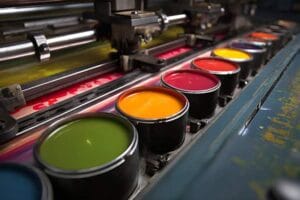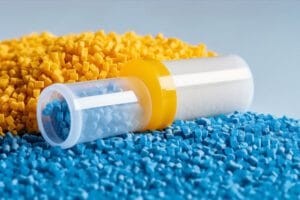With the increasing awareness of environmental protection and people’s pursuit of sustainable products, PU leather is becoming increasingly popular in the market as an environmentally friendly product.
What is PU leather?
PU (Polyurethane) leather is a synthetic leather with a structure and production process that make it look and feel similar to genuine leather, but with better abrasion resistance and durability. In the production process of PU leather, important additives such as anti-hydrolysis agents and water-based crosslinkers play a crucial role in adding new dimensions to the performance and durability of the product.
Structure of PU Leather
Surface Layer: PU leather is typically coated with a layer of coating on the surface, which can be a mixture of polyurethane resins used to enhance gloss, waterproofing, and abrasion resistance. With increasing environmental requirements, this coating layer is often made from water-based polyurethane as the base material, and adding carbodiimide crosslinkers can enhance the durability and water resistance of the coating.
Middle Layer: The middle part of PU leather is the polyurethane substrate, which is produced by mixing and processing polyurethane resins with fillers. Fillers can be cellulose, fibers, or other reinforcing materials to increase the strength and stability of the material. Polyurethane (PU) synthesis is achieved through a polymerization reaction, usually through the reaction between isocyanates and polyols. Adding anti-hydrolysis agents to the polyol raw materials of PU can effectively improve the service life of PU leather.
Bottom Layer: Some PU leather may also have a lining layer to increase the softness and comfort of the leather. This lining layer is typically made of cotton fabric or other soft materials.
How Anti-Hydrolysis Agents Prolong the Service Life of PU Leather?
Carbodiimide anti-hydrolysis agent is a commonly used additive in polyol blends for the synthesis of PU (polyurethane). Its principle of action is based on its reaction with carboxyl groups (COOH) in the polymer and isocyanate groups (NCO) in isocyanates. During the synthesis of PU, there may be small amounts of carboxyl groups (COOH) in the polyol. When carbodiimide anti-hydrolysis agents are added to the polyol, they react with the carboxyl groups in the polyol, forming carbamate linkage structures.
Reduction of carboxyl content: Carbodiimide anti-hydrolysis agents act as crosslinkers, crosslinking the carboxyl groups in the polyol, reducing the carboxyl content. This crosslinking reaction reduces the number of free carboxyl groups in PU, thereby reducing the likelihood of hydrolysis of PU in humid environments.
Improvement of PU hydrolysis resistance: Due to the addition of carbodiimide anti-hydrolysis agents, the carboxyl content in PU is reduced, thereby improving its hydrolysis resistance. This reaction prevents water molecules from binding to carboxyl groups in the polyol, thereby preventing hydrolysis reactions.
Therefore, carbodiimide anti-hydrolysis agents improve the hydrolysis resistance of PU materials by crosslinking the carboxyl groups in polyols, reducing the content of free carboxyl groups in PU, thereby extending the service life of PU materials and maintaining their performance even in humid environments.







